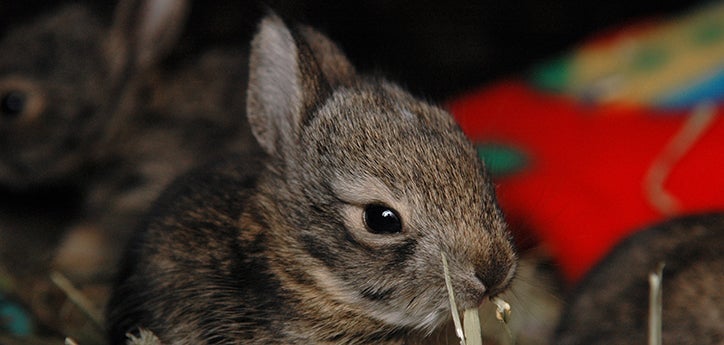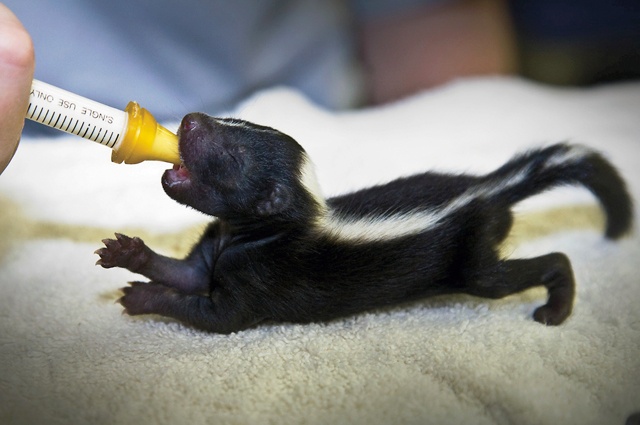Professional Insights on Burlington Animal Control for Family Pet Owners
Wiki Article
The Role of Humane Wildlife Removal in Protecting Resident Ecosystems
Humane wildlife removal is not merely an ethical consideration yet a crucial part in safeguarding regional communities. By focusing on non-lethal techniques, it deals with the delicate equilibrium in between human growth and wildlife environment preservation.Comprehending Human-Wildlife Disputes
Human-wildlife conflicts typically develop when the natural habitats of pets converge with human tasks, leading to competition for resources and room. As urbanization and farming growth remain to trespass upon wildlife regions, animals such as deer, prairie wolves, and raccoons discover themselves in closer proximity to human populations. This distance can result in damaging influence on both wildlife and human beings, as animals may trigger damages to crops, infrastructure, and personal effects while human beings may accidentally hurt wildlife via habitat destruction and other anthropogenic pressures.The intricacy of these disputes stems from a selection of aspects. Changes in land usage, environment modification, and the fragmentation of environments commonly require wildlife to adjust to new environments, sometimes leading them right into household or business locations. Furthermore, the availability of human-generated food sources, such as garbage and animal food, can bring in wild animals to human settlements, aggravating interactions and prospective problems.
Attending to human-wildlife problems requires a nuanced understanding of pet behavior, environmental characteristics, and socio-economic factors to consider. By examining these policymakers, interactions and guardians can develop techniques that intend to mitigate conflicts while protecting biodiversity and preserving environmental equilibrium. The goal is to cultivate coexistence and reduce negative influence on both human areas and wild animals populaces.
Importance of Non-Lethal Methods
Reducing human-wildlife disputes demands approaches that prioritize the wellness of both human beings and animals. Non-lethal approaches of wildlife elimination personify this ethos by offering services that stop injury to wild animals while resolving human worries. These techniques consist of exemption strategies, habitat modification, and the usage of deterrents to prevent wildlife from entering human atmospheres (wildlife rescue burlington). By utilizing such techniques, we can manage wild animals communications without turning to deadly measures, therefore maintaining animal populations and lowering ethical issues associated with murder.These approaches commonly prove a lot more reliable in the lengthy term, as eliminating private animals can produce a space that is rapidly filled up by other members of the species or different varieties altogether. This can lead to a cycle of recurring removal initiatives, whereas non-lethal deterrents attend to the origin triggers of wild animals visibility.
Furthermore, non-lethal strategies foster coexistence by enlightening the general public concerning wildlife habits and motivating unified living techniques. This understanding can lead to more lasting human-wildlife communications, inevitably securing both community passions and animal well-being.
Advantages for Biodiversity
When non-lethal wildlife elimination methods are used, they add considerably to biodiversity preservation. By guaranteeing the risk-free moving of animals rather than their removal, these approaches keep environmental equilibrium and protect the integrity of ecological communities.
Furthermore, these methods promote coexistence in between human beings and wild animals, reducing negative interactions and preserving the abundant tapestry of life that characterizes biodiverse areas. This approach urges a deeper understanding and regard for wildlife, fostering area support for preservation efforts. Inevitably, humane wild animals removal is a vital component in guarding biodiversity, making certain ecosystems remain lively and practical for future generations.
Techniques for Efficient Removal
Carrying out reliable approaches for humane wildlife removal requires an extensive understanding of animal habits and environment requirements. This expertise offers as the foundation for developing methods that guarantee the ethical and safe relocation of wildlife.Another important method is utilizing exemption methods, which concentrate on sealing entrance indicate stop pets from going back to frameworks. This approach not just addresses the instant issue but also functions as a long-lasting solution, decreasing future problems in between human beings and wild animals. The use of safe deterrents and repellents can urge pets to abandon locations voluntarily, complementing various other removal efforts.
Capture and moving need to constantly be a last resort, employed just when pets position a direct danger or are unable to leave on their own. In such instances, read this article using humane traps and guaranteeing the release of animals in suitable environments are important to protecting their well-being. Partnership with wildlife specialists and adherence to legal laws additionally enhance the performance of these approaches.

Promoting Coexistence in Urban Locations
Promoting conjunction in urban areas requires a complex approach that balances human advancement with the demands of regional wild animals. As urbanization continues to broaden, it is essential to execute strategies that mitigate human-wildlife conflicts while maintaining biodiversity. Urban policymakers and coordinators need to integrate eco-friendly areas, such as parks and wild animals hallways, right into city layouts to provide habitats for native species. These areas not only support wildlife but likewise improve the high quality of city life by her latest blog boosting air top quality and offering entertainment rooms for residents.Education and awareness projects are critical in cultivating a society of coexistence. Residents require to recognize the value of wild animals and the function they play in regional ecological communities. Workshops and educational sessions can outfit neighborhoods with understanding on exactly how to decrease problems, such as safeguarding trash and utilizing humane deterrents to avoid wildlife intrusion.
In addition, modern technology can play a substantial role in advertising conjunction. Making use of wildlife surveillance systems, as an example, can assist track pet movements and educate metropolitan preparation decisions. Collaborations between ecological companies, neighborhood federal governments, and community teams can even more reinforce these efforts, ensuring that metropolitan development advances sustainably while valuing the environmental equilibrium.
Final Thought
Humane wild animals removal is vital for keeping ecological equilibrium and biodiversity by employing non-lethal approaches that decrease injury to animal populations. Recognizing human-wildlife conflicts and applying strategies such as exclusion techniques and habitat modification can properly handle these encounters. Such approaches support the conservation of indigenous varieties and their habitats, enhancing neighborhood interaction and recognition. Ultimately, promoting coexistence in metropolitan areas cultivates an unified partnership in between humans and the all-natural setting, making sure lasting communities for future generations.As urbanization and farming development proceed to intrude upon wildlife territories, animals such as raccoons, coyotes, and deer locate themselves in closer closeness to human populaces. Non-lethal techniques of wildlife removal personify this principles by supplying services that avoid harm to wild animals while resolving human issues. By utilizing such methods, we can handle wild animals communications without resorting to deadly steps, consequently preserving animal populaces and reducing honest issues associated with murder.
Executing reliable methods for humane wild animals removal calls for a thorough understanding of animal actions and habitat demands.Humane wildlife article source elimination is necessary for maintaining eco-friendly balance and biodiversity by using non-lethal techniques that lower damage to pet populations.
Report this wiki page